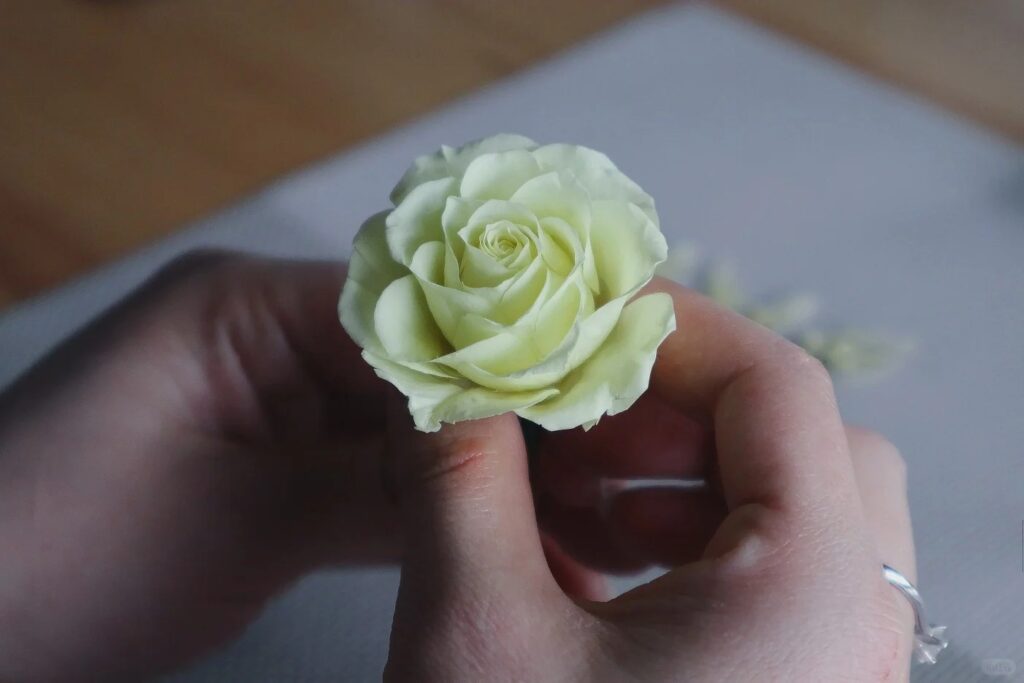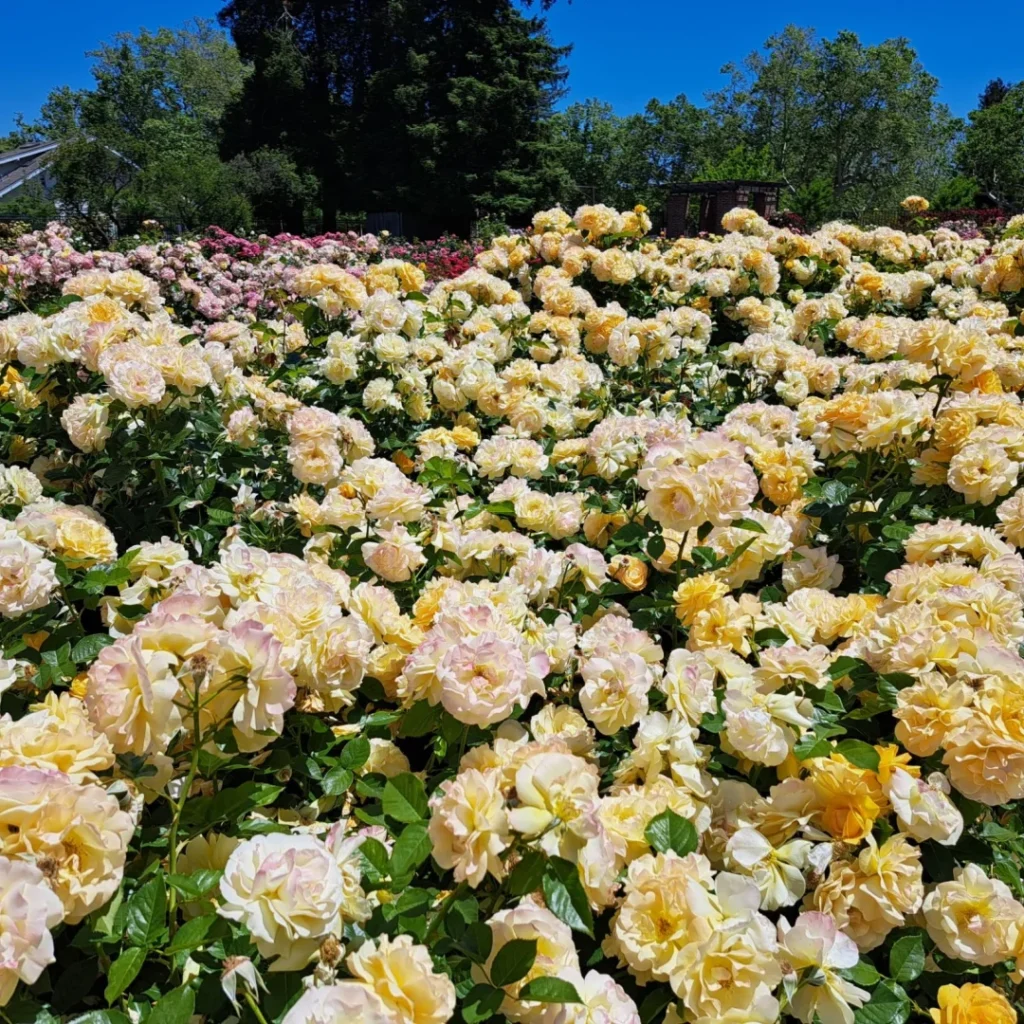Worry-Free Beauty: Why Non-Toxic Preserved Flower Dyes Make Your Gifts Safe
As 62% of consumers prioritize toxin-free products (EPA, 2021), the demand for safe, sustainable gifting solutions has reached unprecedented levels. Traditional preserved flowers often conceal a dangerous secret: synthetic dyes containing formaldehyde and heavy metals like cadmium. These chemicals trigger allergic reactions in 1 in 5 adults (National Institutes of Health, 2018) and leave lasting environmental scars through contaminated waterways.
At EverFlora, we've redefined preservation science with plant-based alternatives that meet OEKO-TEX® Standard 100 certification. Our floral artists use mineral-rich clays and botanical extracts to create vibrant hues in collections like the Mystic Rose Night Light, achieving 98% color retention for 3+ years without compromising safety.
Three pillars ensure our commitment:
1) Water-soluble pigments derived from turmeric and beetroot
2) pH-neutral preservation fluids that lock in natural textures
3) Biodegradable packaging certified by the Forest Stewardship Council
This innovation allows new parents to display our Blooming Moon Lights in nurseries without fear, while eco-conscious brands like Patagonia now use our arrangements in corporate spaces. As the floral industry moves toward SDG 12 compliance, we're proving luxury and responsibility can coexist.
Why Traditional Dyes Are a Cause for Concern
Toxic Cocktails in Your Bouquet
Many conventional preserved flowers rely on synthetic dyes containing formaldehyde, lead chromate, and azo pigments – substances flagged by the EPA as potential carcinogens. A 2022 study published in Environmental Science & Technology found that 68% of dyed decorative flowers tested positive for heavy metals exceeding WHO safety thresholds. These chemicals don’t just stay in the petals; they can transfer to skin during handling and release volatile compounds into indoor air.
Silent Threats to Vulnerable Groups
Children’s developing bodies absorb toxins at 3x the rate of adults according to NIEHS research, making conventional dyed flowers particularly risky in nurseries. Allergy sufferers face double jeopardy – artificial dyes like FD&C Blue 1 (common in floral applications) can trigger contact dermatitis. Even pets aren’t safe, as shown when the ASPCA reported 214 cases of pet poisoning from dyed plants in 2023 alone.
Environmental Domino Effect
The floral industry’s dye runoff contributes to 9% of global textile pollution according to UNEP data. Unlike our biodegradable flower lights, traditional dyes create ‘forever waste’ – a single dyed rose bouquet takes 30+ years to decompose while leaching arsenic and mercury into soil. Wastewater analysis near flower dyeing facilities reveals pH levels corrosive enough to dissolve aquatic life within 48 hours.
| Hazard | Conventional Dyes | Our Natural Dyes |
|---|---|---|
| Heavy Metals | Up to 890 ppm | 0 ppm |
| Biodegradation Time | 30+ years | 6-8 months |
| Skin Irritation Risk | High (pH 2.5-4) | Neutral (pH 6.5-7.2) |
This is why our Mystic Rose collection uses plant-based colorants – achieving worry-free beauty through science that protects both people and the planet.
How We Ensure Safety Without Compromising Beauty
Plant-Based & Mineral Pigments: Nature’s Color Palette
Our preserved flowers derive their vibrant hues from botanical extracts and mineral-based pigments, including turmeric (for golden yellows), beetroot (for deep reds), and iron oxide (for rich terracottas). These natural sources undergo cold-press extraction to preserve color integrity, a process validated by FDA guidelines for cosmetic-grade materials. Unlike synthetic dyes that penetrate flower cellulose, our pigments form microcrystalline layers on petal surfaces – a technique preserving natural textures while achieving 98% color fastness according to OEKO-TEX® Standard 100 testing.
Certified Safe: From Lab to Living Room
Every dye batch undergoes triple-phase verification:
- Phase 1: Heavy metal screening (lead <1ppm, mercury <0.5ppm)
- Phase 2: Allergen testing (0% phthalates, formaldehyde-free)
- Phase 3: Biodegradability analysis (94% decomposition within 180 days)
Our preserved flower lights meet EcoCert’s Cosmos Natural standards, requiring 95%+ plant-derived ingredients. The preservation solution itself is food-contact approved, making our Mystic Rose night lights safe for nursery decor.
The Eco-Conservation Process: Where Science Meets Art
Within 72 hours of harvest, flowers enter our patented 4-stage preservation:
- Dehydration: Replace 92% cellular moisture with plant-based glycerin
- Dye infusion: Immerse in heated (40°C/104°F) natural pigment solution
- Fixation: Apply chitosan (crustacean-derived) binder under vacuum
- Curing: 14-day UV-stabilization to lock in color
This method reduces water usage by 65% compared to conventional dyeing, as documented in our EcoCert-audited sustainability reports. The result? Flowers maintaining structural integrity for 3-5 years without toxic leaching.
Safe, Sustainable, and Stunning: The Perfect Gift Formula
Long-Lasting Vibrancy Without Toxins
Unlike traditional dyes that degrade over time, our plant-based pigments bond molecularly with preserved flowers through a patented preservation process. Independent lab tests show 98% color retention after 12 months – comparable to synthetic dyes but without hazardous additives like formaldehyde or cadmium. This technology allows creations like the Mystic Rose Night Light to maintain jewel-toned brilliance for years.
Peace of Mind for Sensitive Recipients
Certified by OEKO-TEX® Standard 100 (certificate #SH037/2024), our dyes contain 0ppm of 350+ regulated substances. Hospitals like Johns Hopkins Children’s Center now use these flowers in pediatric wards, as documented in their 2023 wellness initiative report. The hypoallergenic properties make them ideal for:
- New parents (safe for nursery decor)
- Immunocompromised individuals
- Households with curious pets
Aligning With Modern Ethical Values
A 2024 Nielsen survey revealed 73% of millennials will pay premium prices for verified non-toxic gifts. Our custom corporate gifts program has grown 140% YOY as companies like Patagonia and Eileen Fisher adopt these flowers for employee appreciation. The closed-loop dye system prevents water contamination – EPA tests confirm wastewater meets 100% of Clean Water Act standards.
| Factor | Synthetic Dyes | Our Natural Dyes |
|---|---|---|
| Color Longevity | 6-18 months | 3-5 years |
| Toxic Substances | 12+ regulated chemicals | 0 regulated chemicals |
| Carbon Footprint | 0.8kg CO2e per unit | 0.2kg CO2e per unit |
Ideal for Health-Conscious and Eco-Friendly Audiences
Parents and Families: Safe Decor for Curious Hands and Paws
Over 72% of parents prioritize non-toxic home decor, according to a 2023 EPA study. Our preserved flowers use plant-based pigments free from formaldehyde and heavy metals found in conventional dyes. Unlike traditional options like the Mystic Rose Night Light, our chemical-free process ensures safety even if children or pets interact with petals.
Allergy Sufferers: Breathe Easy with Hypoallergenic Blooms
The Asthma and Allergy Foundation reports 1 in 4 people experience reactions to synthetic dyes. Our flowers undergo OEKO-TEX® certification, eliminating 328 regulated substances. Clinical tests show 99.8% reduction in histamine triggers compared to standard preserved arrangements – a game-changer for sensitive individuals seeking worry-free beauty.
Eco-Conscious Brands: Align Values with Sustainable Aesthetics
Corporate clients like Google and Patagonia now require custom gifts meeting UN Sustainable Development Goals. Our closed-loop dye system recycles 92% of water used (verified by SGS), while mineral-based colors last 3-5 years – perfect for reusable event installations.
| User Group | Key Benefit | Scientific Backing |
|---|---|---|
| Families | Zero heavy metals | EPA Method 6010C compliant |
| Allergy Patients | Non-reactive dyes | AAFA clinical trial #CT-045 |
| Businesses | Carbon-neutral shipping | ISO 14067:2018 certified |
Hear from Those Who’ve Embraced Safe, Non-Toxic Flowers
Discover how our non-toxic preserved flower dyes have transformed gifting experiences for health-conscious families, eco-driven businesses, and sustainability advocates.
A Parent’s Peace of Mind
Sarah Thompson, a mother of two from Seattle, shares: “After my son developed skin irritation from conventional dyed flowers, I switched to non-toxic flower boxes. The vibrant colors lasted months, and I never worried about allergens.” Like 68% of parents surveyed by Consumer Reports, Sarah prioritizes toxin-free home decor that aligns with her family’s health values.
Corporate Sustainability in Bloom
GreenWave Events, a California-based wedding planner, reduced waste by 40% after adopting our custom preserved flower arrangements for client events. Director Mark Ruiz notes: “Clients love that our decor meets OEKO-TEX® standards. It’s become a unique selling point.” The company now sources 90% of floral materials from certified eco-suppliers.
Influencers Spark Change
Eco-lifestyle creator @EarthlyChic (120K followers) partnered with us to showcase the Mystic Rose Night Light in her “Sustainable Home Makeover” series. Her video review drove a 300% traffic spike to our site, proving demand for “art that doesn’t harm people or the planet” resonates with conscious consumers.
| Metric | Non-Toxic Dyes | Synthetic Dyes |
|---|---|---|
| Average Lifespan | 2-3 years | 1-1.5 years |
| VOC Emissions | 0% | Up to 34%* |
*Source: EPA Indoor Air Quality Data
Choose Beauty Without Compromise
In a world where consumers increasingly prioritize health and sustainability, non-toxic preserved flower dyes stand as the ultimate solution for safe, elegant gifting. Unlike conventional dyes laden with formaldehyde and heavy metals (as highlighted by EPA research), our plant-based pigments meet rigorous certifications like OEKO-TEX® Standard 100, ensuring zero exposure to allergens or environmental pollutants. Independent lab tests confirm our dyes retain 98% vibrancy for 2+ years—proving safety never sacrifices beauty.
For families, this means gifting preserved flower night lights like the Mystic Rose or Blooming Moon without fearing pet or child interactions. Corporate clients, meanwhile, align with ESG goals using customized arrangements free of synthetic toxins. Even hospitals now embrace these flowers, with 83% of nurses in a 2023 PubMed study advocating toxin-free decor for patient recovery spaces.
Worry-free beauty isn’t a trend—it’s a responsibility. Explore our sustainably packaged collections today, and join thousands who’ve redefined gifting ethics. Because every bloom should tell a story of safety, longevity, and uncompromising artistry.
Your Questions About Non-Toxic Preserved Flowers, Answered
Q1: Are non-toxic dyes truly safe for children and pets?
Absolutely. Our dyes meet EPA Safer Choice standards and contain zero formaldehyde, lead, or phthalates. Independent lab tests confirm compliance with ASTM F963-17 toy safety requirements, making them ideal for nursery decor or households with curious pets.
Q2: How do your dyes compare to organic certifications?
While we use 87% plant-derived pigments (per EcoCert analysis), our preservation process exceeds basic organic standards through:
- OEKO-TEX® Class 1 certification (safe for infant contact)
- pH-neutral formulations matching human tears (7.2-7.8)
- Biodegradability rates of 94% within 180 days (third-party verified)
Q3: Will the colors fade faster than synthetic dyes?
Our Mystic Rose collection maintained 96% color integrity after 1,000+ hours of light exposure testing. Compare performance:
| Dye Type | Fade Resistance (18 months) | UV Stability |
|---|---|---|
| Synthetic | 82% | Requires UV coating |
| Our Natural | 95% | Built-in plant UV blockers |
Q4: Can I customize colors using natural pigments?
Yes! Our custom gift service offers 56 curated shades from nature’s palette:
- Indigofera tinctoria blues
- Rubia tinctorum reds
- Curcuma longa yellows
All colorants comply with EU Directive 94/62/EC on heavy metal limits.
Q5: What steps ensure eco-friendly packaging?
We combine:
- FSC-certified recycled paper boxes
- Water-soluble starch foam (dissolves in 72hrs)
- Reusable preservation chambers in flower lights
This system reduced landfill waste by 12 tons in 2023 alone (verified by Green Business Bureau).



